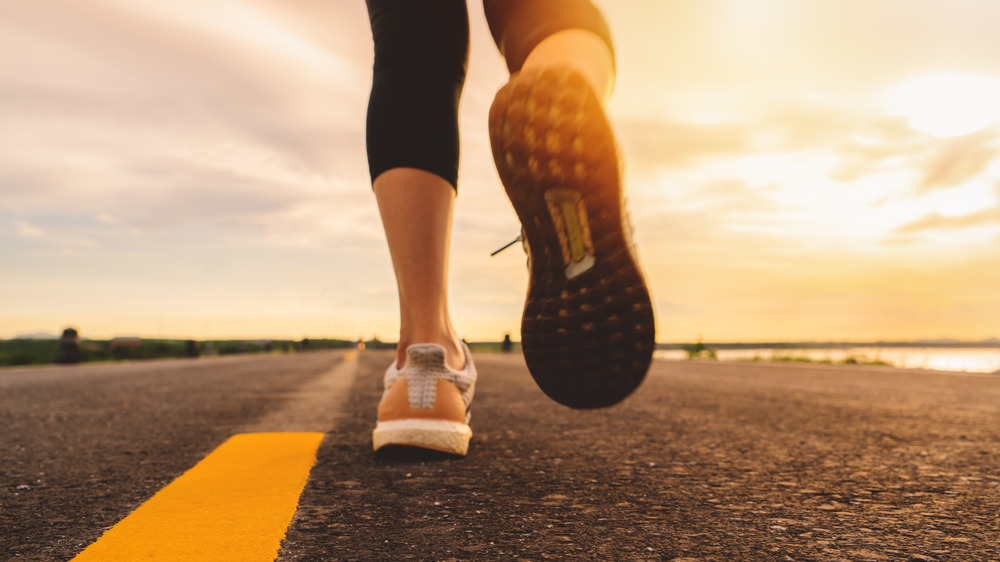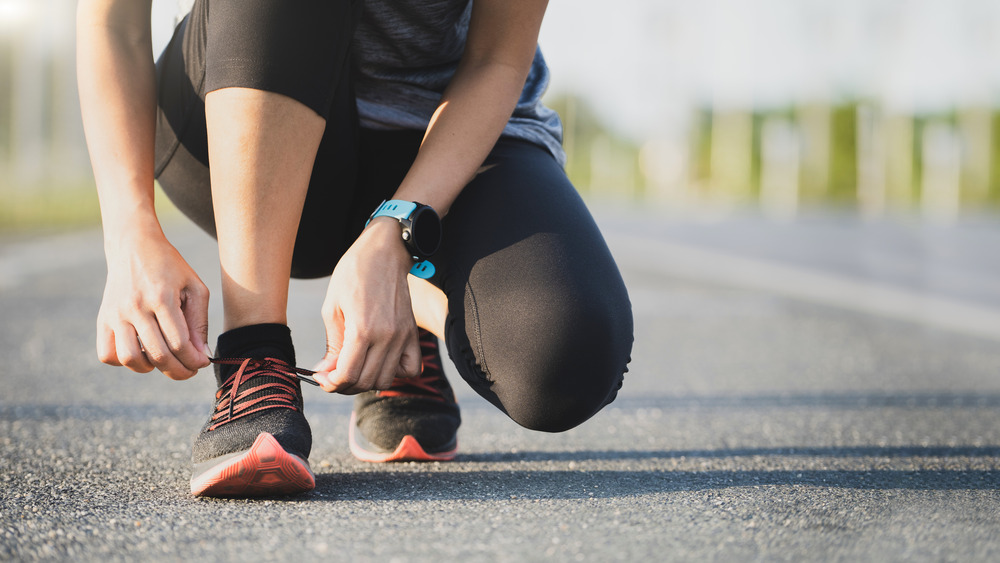When You Go Running In Old Shoes, This Is What Happens
If you recently returned to running and started with the old pair of shoes you had in your closet from 2002, or you've been running regularly in the same pair of shoes for the last few years, you may notice that your stride doesn't feel quite as good as it did when you first started wearing those shoes. For some people, replacing running shoes needs to be done regularly, though for others, you may be able to wear the same pair for years without noticing any ill effects. Like most things that are fitness- and nutrition-related, your running shoe longevity largely depends on you as an individual.
Generally speaking, the rule of thumb is that running shoes should be retired every 300 to 500 miles. By that time, often the materials on the upper part of the shoe are beginning to show signs of wear and tear anyway, but the real issue is with the foam and the soles of the sneakers. Shoes do wear down and foam begins to compress over time, which can lead to not only discomfort but uneven running patterns, since the foam will compress more in certain areas of the shoe where you tend to put a lot of pressure (via Runner's World).
"An older running shoe that has tons of miles logged on it won't be as responsive, cushioned, or supportive as a new pair," trainer and running consultant Greg Laraia told Livestrong. That means as you're pounding the pavement, your body is absorbing more of that load as the cushion from your shoe decreases.
Is this true for all running shoes?
For trail runners, shoe wear and tear is even more pronounced and can even be dangerous. Hundreds of miles run on the trails can wear down the shoe's lugs, designed for optimal traction on muddy trails and slick rocks, and that can lead to serious slips and falls. Once those nubs begin to wear down — which can happen quite quickly if you tend to run on the road in order to reach the trail — you may notice that you're not as stable as you were when you first started using the shoes. A quick look at the sole will show if it's time to replace your shoes (via FleetFeet).
However, if you're still running comfortably and feeling good in your shoes, don't worry about counting off miles. If you aren't loving the fit and feel of your old running shoes, then head to a running store and try a new pair. Don't wait until there's a larger problem, like chronic pain or an actual injury. "While wearing the wrong running shoes may not directly cause an injury, it can certainly be a contributing factor among other variables, such as a runner's individual mechanics and training regimen," physical therapist Jolan Browne told Livestrong.

